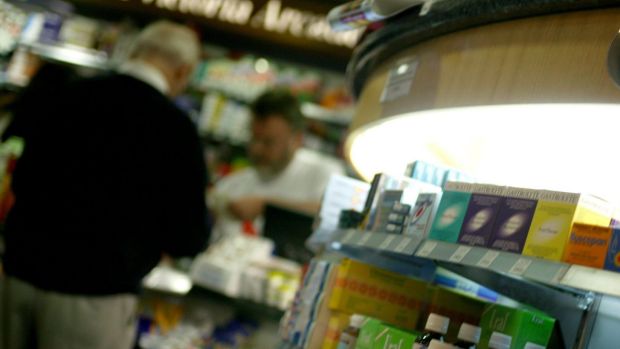Pharmacists could see their PBS funding cut if they don’t limit the space they devote to retail products, and restrictions put on the types of products they sell under potential reform measures canvassed by a major federal government review.
A pharmacist’s dual role as retailer and healthcare professional had blurred the line between treating people as customers or patients, the Pharmacy Remuneration and Regulation review panel has heard.

It meant community pharmacists face a conflict of interest by offering patients unnecessary over-the-counter and complementary medicines to boost their earnings, according to the review’s discussion paper released this week.
The potential tension between profits and healthcare stemmed from the remuneration of dispensing medicine and the “revenue generated from the sale of over-the-counter medicines and complementary products”, wrote the review panel lead by the Productivity Commissioner, Professor Stephen King.

The average turnover for community pharmacies in Australia was $2.8 million and the average net profit is $107,000 (excluding proprietors’ salaries), according to data from Guild Digest cited in the paper.
“The Panel has heard that some consumers are concerned that pharmacists may compromise on the level of professional advice provided to patients on the quality use of medicines and feel financial pressure to ‘up-sell’ to consumers, for example by recommending medicines or products that may not be necessary for the patient,” the paper said.
They also heard claims that many complementary products do not have evidence-based health benefits.
“As such, sale of these products in a pharmacy setting may misinform consumers of their effectiveness and undermine the professional integrity of community pharmacists,” the discussion paper read.
Launched by Health Minister Sussan Ley in 2015, the review was a key component of the $18.9 billion agreement struck by the federal government and the pharmacy sector before the election.
One reform measure posed by the panel was whether to enforce a maximum ratio of retail space to “professional area” in pharmacies “to maintain the atmosphere of healthcare settings”.
“Should government funding take into account the business model of the pharmacy when determining remuneration, recognising that some businesses receive significant revenue from retail activities?” was one of 140 questions raised in the paper.
“Should there be limitations on some of the retail products that community pharmacies are allowed to sell? For instance, is it confusing for patients if non-evidence-based therapies are sold alongside prescription medicines?” the paper read.
“It has been put to the panel that a non-retail environment may improve the health outcomes for patients.
“For instance, some hospital pharmacies have their service area resemble a clinic rather than just a counter, providing a private environment without distraction, which maximises the professionalism of patient pharmacist interaction.”
National president of the Pharmacy Guild of Australia George Tambassis said the sector welcomed reform but would oppose “ideologically-driven deregulation which will only put a tried and tested system at risk”.
“It would be irresponsible to jettison a pharmacy model which has clearly demonstrated its merit,” he said, adding that consumer surveys consistently found customer satisfaction exceeded 90 per cent, and pharmacists were always in the top tier of most trusted professionals.
“Why would you dismantle a good system that achieves its objectives, just to blindly follow an economic theory?” he asked.
The discussion paper cited an IBISWorld that suggested the average pharmacist-employee earned $55,400 in 2012, not including any profit share, and noted the significant expense of rental and lease costs, particularly for pharmacies in shopping centres or medical centres.
Releasing the discussion paper, Ms Ley said “the Turnbull government is committed to an integrated health system that ensures strong co-ordination between a patient’s healthcare team, as evidenced by our landmark Health Care Homes and My Health Record reforms,” Ms Ley said.
“As a regional member of Parliament, I know first-hand that pharmacists are taking a greater role in a patient’s overall healthcare every day – it’s no longer just about prescription medicines,” she said.
Formal consultations and submissions to the review will take place over the next two months.
